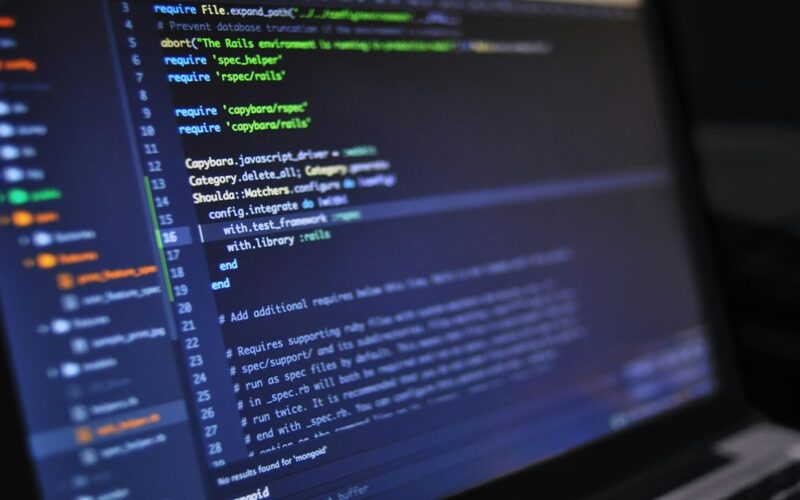Blog Summary: Feeling lost in How to write a function on Python? Python functions come to the rescue! These reusable blocks handle specific tasks, taking inputs and spitting out results. They clean up your code, making it organized and easier to manage. Plus, functions boost efficiency – no more copy-pasting! This blog dives deep into functions, teaching you how to define them.
How to Write Functions in Python
Python, a versatile and beginner-friendly programming language, shines in its ability to create well-organized and reusable code. A cornerstone of this organization is the concept of functions. In this comprehensive guide, we’ll delve into the world of functions in Python, equipping you with the knowledge to craft powerful and efficient programs.
Functions Demystified
Imagine a complex recipe. Instead of rewriting the instructions for making the base sauce every time you cook a new dish, you create a separate recipe for the sauce. This is the essence of functions in Python. They are self-contained blocks of code designed to perform specific tasks.
These tasks can be simple calculations, manipulating data, or even interacting with external systems. Functions promote code reusability, making your programs cleaner, more efficient, and easier to maintain.
Key Features of Functions
Python functions let you create reusable code blocks. You can pass data (arguments) to them and get results back (return values). This makes code cleaner, avoids repetition, and promotes modularity. Let’s explore the key characteristics that make functions a programmer’s best friend:
Reusability
Once defined, a function can be called multiple times from different parts of your program, eliminating the need to duplicate code. This saves time and reduces the risk of errors.
Modularity
Functions break down complex programs into smaller, manageable units, improving code readability and understanding. This modularity is crucial for large-scale projects.
Encapsulation
Functions encapsulate specific functionalities, hiding their internal details from the rest of the program. This promotes data protection and prevents unintended modifications.
Parameters and Arguments
Functions can accept inputs, called arguments, which tailor their behavior for different scenarios. This flexibility allows functions to be adaptable and widely applicable.
Return Values
Functions can optionally return a value after completing their task. This returned value can be used in other parts of your program, facilitating data processing and flow control.
Applications of Functions in Action
Python functions act like tools in your code toolbox. You build them to do specific jobs, like calculating areas or formatting text. By using functions, you avoid repeating code, keep things organized, and make your programs more efficient Here are a few examples:
Data Processing: Write functions to clean, filter, and transform data, preparing it for analysis.
Calculations: Create reusable functions for repetitive mathematical operations, ensuring consistency and reducing errors.
String Manipulation: Define functions to format strings, extract specific information, or perform text transformations.
User Interaction: Develop functions to handle user input, display messages, and create interactive interfaces.
Object-Oriented Programming (OOP): Functions are the building blocks of methods in object-oriented programming, defining the behavior of objects.
Understanding how functions work unlocks a world of possibilities in Python programming.
Examples to Illuminate Understanding
Now that you are aware about functions in Python, and its applications. This segment will help you solidify our grasp of functions with some practical examples. These are listed below:
Simple Calculation Function
This function, add(x, y), takes two arguments, x and y, adds them, and returns the result. We can call this function with different values to perform various additions.
String Manipulation Function
Here, the greet(name) function accepts a name as input, constructs a greeting message, and returns it. This function personalizes greetings for different users.
Conditional Logic in Functions
This function, is_even(number), determines if a number is even using a conditional statement. It returns True for even numbers and False for odd numbers.
These are just a few examples, and the possibilities are endless! As you progress in Python, you’ll encounter functions in various libraries and frameworks, further expanding your programming prowess.
How do I Define a Function in Python?
Functions are defined using the def keyword followed by the function name and parentheses. You can optionally include parameters within the parentheses, which act as inputs to the function.
What are Parameters and How Do I Use Them?
Parameters are variables used within the function to hold the values passed during the function call. You define parameters inside the function’s parentheses when you define it. When calling the function, you provide actual values (arguments) that correspond to the parameters.
Can Functions Return Multiple Values?
In Python, functions can only directly return a single value using the return statement. However, you can achieve a similar effect by returning a list, tuple, or dictionary containing the desired values.
How Do I Write Clear and Concise functions?
Choose descriptive names for your functions and parameters. Use comments to explain the function’s purpose and what it does. Keep your functions focused on a single task for better readability and maintainability.
Functions- The Powerhouse of Python Programming
By mastering functions, you unlock the true potential of Python. You can write modular, reusable, and well-structured code, making your programs efficient and maintainable. As you delve deeper into Python, functions will become your go-to tool for tackling complex problems and building robust applications.
Elevate Your Python Skills with Pickl.AI’s Data Science Course
Ready to take your Python programming skills to the next level? Enroll in Pickl.AI’s comprehensive Python for Data Science course! This course will equip you with not only a thorough understanding of functions but also cover essential Data Science topics like data manipulation, analysis, and visualization.
Invest in your future with Pickl.AI’s Python for Data Science course and unlock exciting possibilities in the data-driven world!
Frequently Asked Questions
What is an Example of a Function in Python?
See the examples provided above (add, greet, and is_even). There are countless functions you can define in Python, tailored to specific tasks.
What Are The Different Types of Functions in Python?
There aren’t strictly four types of functions in Python, but there are different ways to categorize them. Here are some common classifications:
Built-in Functions: These are pre-defined functions that come with Python, like print(), len(), or max(). You can use them directly without defining them yourself.
User-Defined Functions: These are functions you create using the def keyword to encapsulate specific functionalities within your program.
Recursive Functions: These are functions that call themselves within their definition, creating a loop-like behavior to solve problems that can be broken down into smaller, similar sub-problems.







